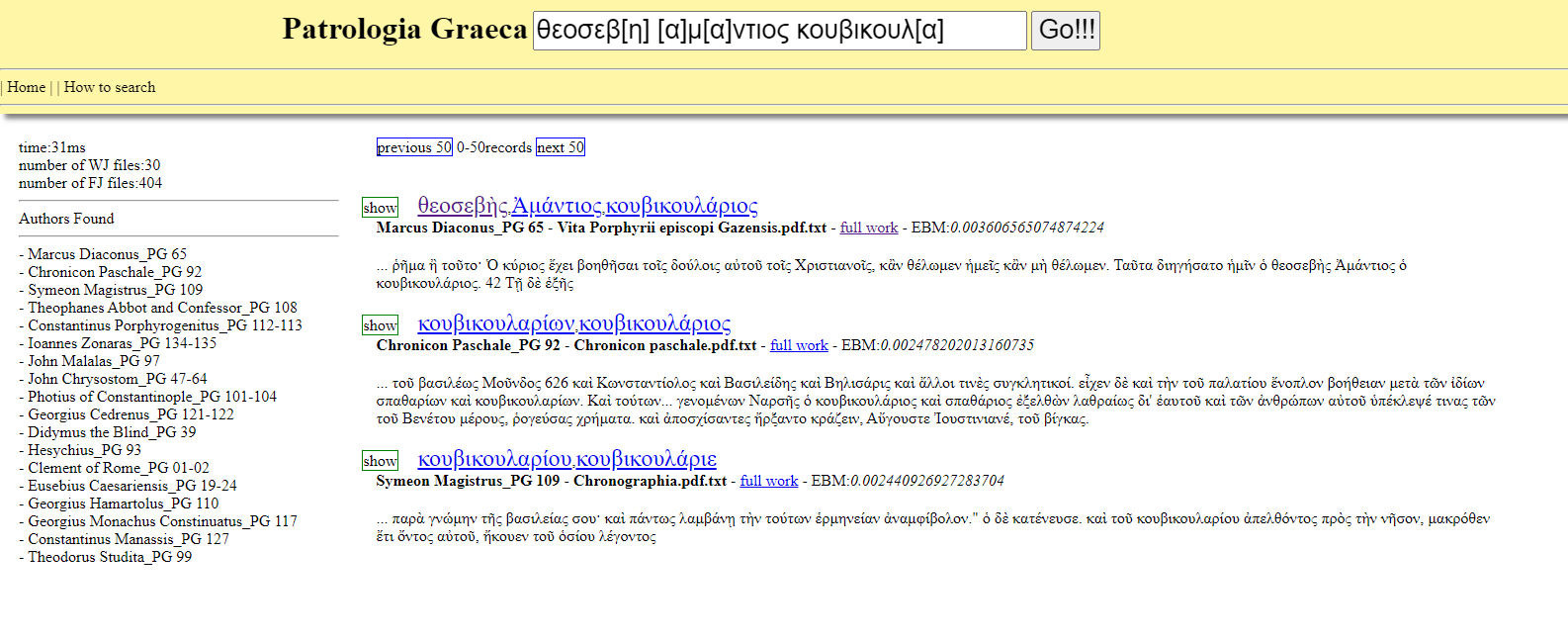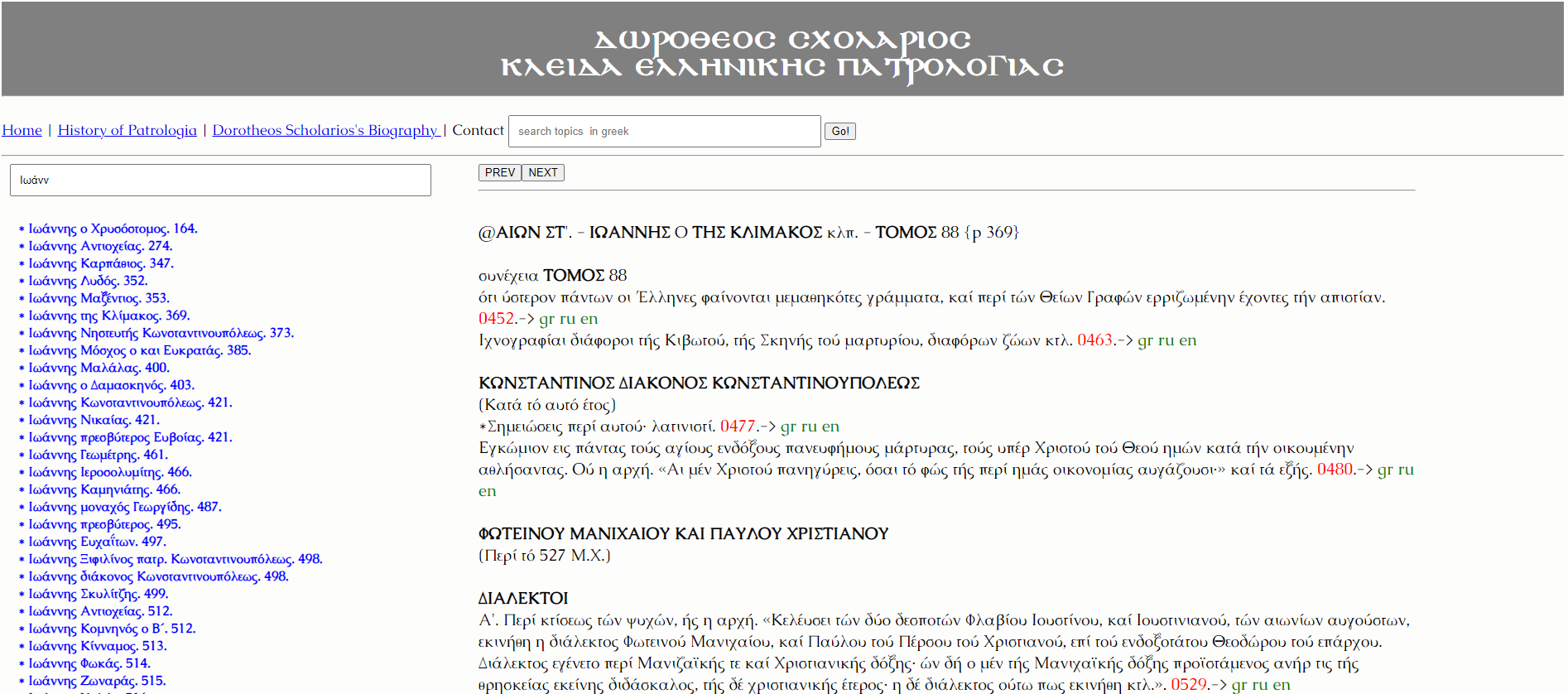Dictionary of the Information Science
The "Dictionary of Information Science" was developed to serve as an aid to undergraduate and postgraduate students of the Department of Archives, Library Science & Museology, in the interpretation of terms related to the subject of their studies. Particular emphasis has been placed on terms from the field of artificial neural networks. The dictionary contains 9661 terms.
Migne Patrologia Graeca
This tool automatically transforms the unstructured texts of the Greek Patrology of Migne into a group of special JSON files which constitute a NoSQL read-only database. The advantage of the method is the immediate search of the collection through the world wide web with possibilities of easy expansion when there is a high load (large number of users). There is a significant reduction in management and installation costs and the system is portable and easily transferred. The system can also be applied to other collections with minor modifications.

This tool searches for words on the scanned pages of the Greek Patrology. First the page is segmented at the word level and then a special transformation of the words into compact shapes is applied. The Hu ropes are used to remove very different words, the Shape Context algorithm for checking the word similarity and the Pearson coefficient for the final verification of the word similarity.

In this tool we use the work of Dorotheos Scholarios "Keys of Greek Patrology" to connect the scanned pages of Greek patrology with thematic and conceptual sections. In this way significant semantic search and enrichment is provided. There is also the possibility to search for authors and topics. The advantage of the method is that there is a direct connection of the volume and the page of Greek patrology with easily memorable hyperlinks on the world wide web.
E.g. for volume 88 and on page 576 the corresponding hyperlink is:
http://scholarios.graeca.org/public/pgfront/?vol=088&page=0576
Thus, by typing a new volume and page in the hyperlink, the new source is directly located. This interface can be used by other collections for further enrichment of Greek patrology and it is very friendly to the method of groundsourcing.

